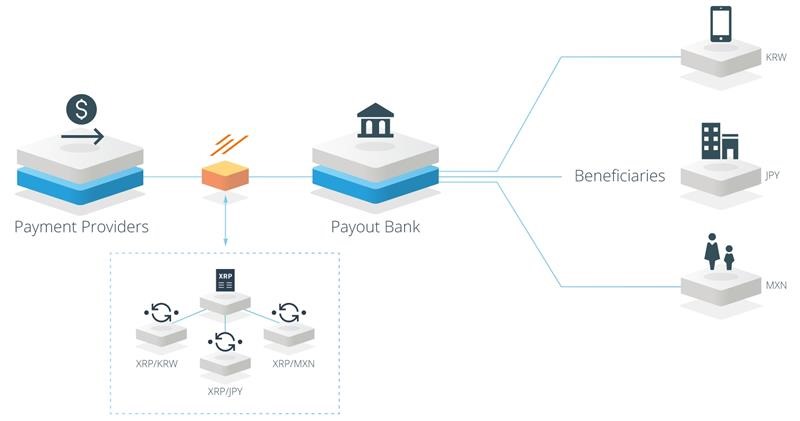Ripple targeting India for its blockchain payments, wants to increase list of supported banks

Ripple wants to target the Indian market with its blockchain technology to speed up inter-country payments. Navin Gupta, Ripple’s Managing Director for South East Asia, Middle East and North Africa recently spoke in an interview with Cryptocoindaddy. Ripple opened their office in Mumbai, India last year and has been busy adding Indian banks to xCurrent.
With xCurrent, it will be going against SWIFT that is currently used for cross-border payments and has ~6 percent error rate. This is what xCurrent aims to reduce.
xCurrent enables banks to do cross border payments in 3-5 seconds with end-to-end tracking.

Gupta explained other issued associated with the SWIFT and this includes liquidity that must be stored in nostro accounts. Ripple solves this problem with xRapid.
xRapid is a low cost liquidity solution for payment providers and financial institutions that aims to minimize liquidity costs. xRapid makes use of XRP token for enabling real time payments.
Navin Gupta added,
“Let’s say if one bank wants to send money to another bank, it has to first add the second bank to its trusted list – just like you would first add a WhatsApp/WeChat contact. The backend of tech then checks the name of the bank, account number and does checks on anti-money laundering rules. Like WhatsApp/WeChat, transaction is settled in 3-5 seconds. “
Ripple has already deployed its tech in four banks in India – Yes Bank, IndusInd, Axis and Kotak Mahindra Bank. They are already in talks with other banks.
xRapid is already being used by several banks in Middle Eastern region. Keep in mind that this technology can be used to transfer both fiat (USD, EUR, INR etc) as-well-as cryptocurrencies.

So, even if a Middle Eastern country like Saudi Arabia bans bitcoin trading, xRapid can still be used in their banks for transferring fiat currencies.
Saudi Arabia makes bitcoin trading illegal
》https://t.co/fEYsM407q1
#saudiarabia #bitcoin #crypto #cryptocurrency $BTC $LTC $ETH pic.twitter.com/mju6FMMe7s— CRYPTO COIN NEWS (@CRYPTOCOINNEWSi) August 16, 2018
XRP is separate from Ripple. XRP is not Ripple’s cryptocurrency, as Ripple only uses it for xRapid, one of its cross-border payment solutions which help payment providers source for liquidity on demand. If Ripple the software company were to go away today, the XRP ledger will still exist and continue to function.
This implies that even after banning cryptocurrencies in India, Ripple will continue to exist and help people send and receive money faster and more efficiently than conventional SWIFT-based system.
And this was reaffirmed by Navin Gupta. He said if the government is against cryptocurrencies, Ripple will not go against regulators. Instead, it will work with them to provide payment solutions that do not involve public-accessible blockchain.
In other words, even if the bank and financial institutions are uninterested in cryptocurrency side of Ripple, they can continue to adopt and use Ripple’s cross-border payments tech to bridge payments.
